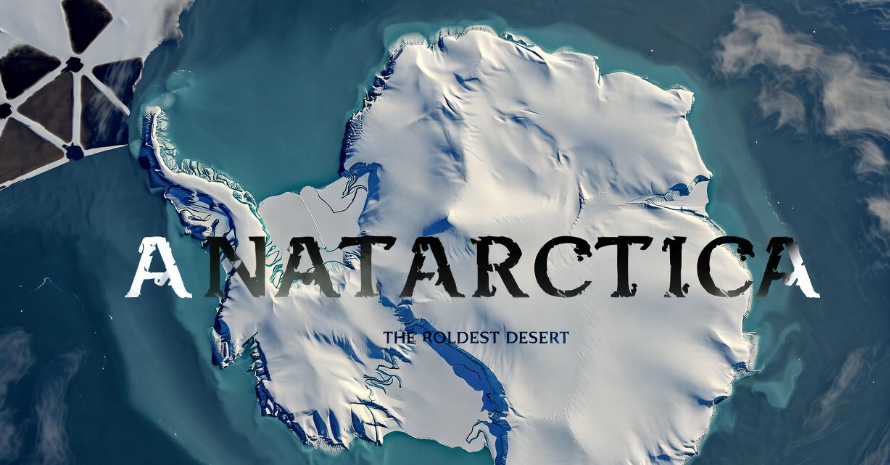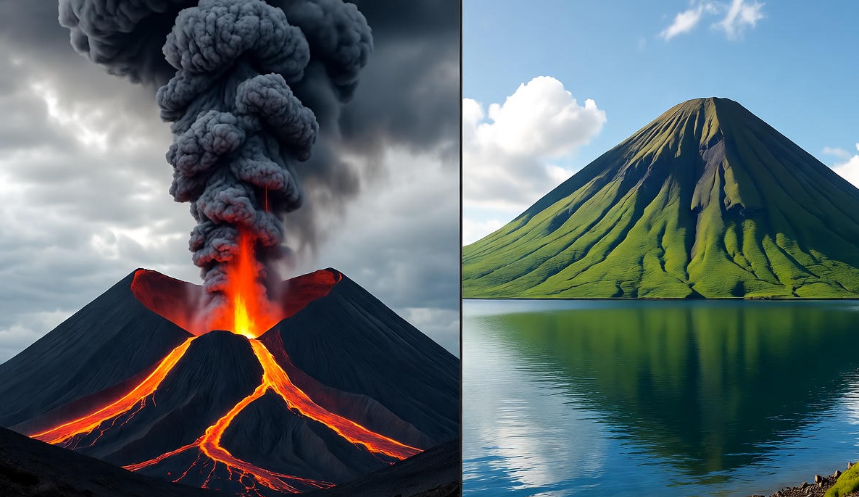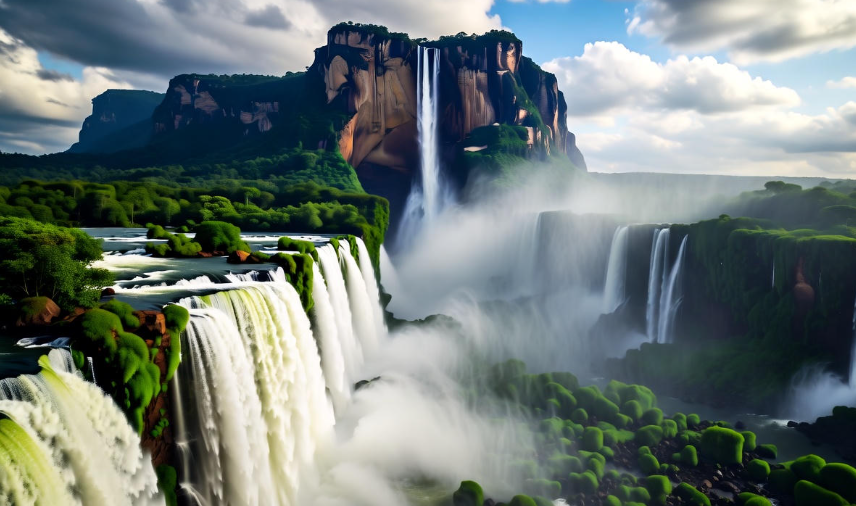When most people hear the word “desert,” they instantly picture endless sand dunes and scorching heat. But did you know not all deserts are hot? Some are freezing, icy, and full of surprises ❄️.
Deserts actually cover about one-third of the Earth’s land surface, and they exist on every continent — even Antarctica!
So, let’s explore the 10 largest deserts in the world and uncover some surprising facts about each one.
1. Antarctic Desert (The Largest in the World)
| Feature | Details |
|---|---|
| Location | Antarctica (South Pole) |
| Area | Around 14 million sq km |
| Type | Cold Desert |
| Temperature Range | -89°C to -25°C |
When people think of deserts, they imagine heat — but the Antarctic Desert is the coldest, driest, and windiest place on Earth. It receives less rainfall than the Sahara!
The thick ice sheet covering the continent holds about 70% of Earth’s freshwater, locked up as ice. Surprisingly, scientists have even found tiny microbes surviving in this extreme cold.
Fun fact : Antarctica is technically a desert because it gets less than 50 mm of precipitation a year — not because of temperature!
2. Arctic Desert
| Feature | Details |
|---|---|
| Location | North Pole (Arctic Circle) |
| Area | Around 13.9 million sq km |
| Type | Cold Desert |
| Temperature Range | -40°C to 10°C |
The Arctic Desert covers parts of Canada, Greenland, Russia, and Alaska. It’s slightly smaller than Antarctica but still massive.
Even though it’s freezing, the Arctic is home to polar bears, Arctic foxes, and seals. ️
Interesting twist: Some areas in the Arctic are warming so fast that scientists say the ice could melt completely during summers in the near future — turning it into something very different from what we know today.
3. Sahara Desert ️
| Feature | Details |
|---|---|
| Location | North Africa |
| Area | 9.2 million sq km |
| Type | Hot Desert |
| Temperature Range | 7°C (night) to 50°C (day) |
Ah, the Sahara — the classic desert everyone imagines when they hear “desert.” But this giant isn’t just sand dunes! It also has mountains, rocky plateaus, and oases where people have lived for thousands of years.
Surprising fact :
The Sahara was once a lush green land full of lakes and animals. Fossils show it used to have crocodiles and elephants! Scientists believe it turns green roughly every 20,000 years due to natural climate cycles.
4. Arabian Desert
| Feature | Details |
|---|---|
| Location | Arabian Peninsula (Saudi Arabia, Oman, Yemen, UAE, etc.) |
| Area | 2.3 million sq km |
| Type | Hot Desert |
The Arabian Desert is known for its endless dunes, dry winds, and oil-rich underground fields. It’s also home to the famous Rub’ al Khali — or “Empty Quarter” — one of the largest sand deserts in the world.
Despite harsh conditions, tribes like the Bedouins have survived here for centuries, mastering the art of living with limited water.
Fun tidbit: Some of the highest sand dunes here reach up to 250 meters tall — taller than most skyscrapers!
5. Gobi Desert ️
| Feature | Details |
|---|---|
| Location | Northern China and Southern Mongolia |
| Area | 1.3 million sq km |
| Type | Cold Desert |
| Climate | Hot summers, freezing winters |
The Gobi Desert is full of contrasts — scorching heat in summer and snow in winter!
It’s famous for being part of the ancient Mongol Empire and the Silk Road trade route.
Surprising fact :
Many dinosaur fossils, including the first dinosaur eggs ever discovered, were found in the Gobi Desert!
6. Kalahari Desert
| Feature | Details |
|---|---|
| Location | Southern Africa (Botswana, Namibia, South Africa) |
| Area | 900,000 sq km |
| Type | Semi-arid Desert |
The Kalahari isn’t a “true desert” because it actually gets more rain than most. That’s why you’ll find grass, shrubs, and even some animals like meerkats, ostriches, and lions roaming around.
It’s also home to the San people, one of the world’s oldest surviving cultures.
Interesting note : The name “Kalahari” comes from the Tswana word “Kgala,” meaning “the great thirst.”
7. Patagonian Desert (or Patagonian Steppe)
| Feature | Details |
|---|---|
| Location | Argentina and Chile (South America) |
| Area | 670,000 sq km |
| Type | Cold Desert |
This desert is the largest in South America and one of the windiest places on Earth. Strong winds from the Andes Mountains sweep across it all year long.
Fun fact ️: Despite being dry and cold, fossils found here show that prehistoric creatures once roamed this area — including giant sloths!
8. Great Victoria Desert
| Feature | Details |
|---|---|
| Location | Australia |
| Area | 647,000 sq km |
| Type | Hot Desert |
Named after Queen Victoria, this desert is known for its red sand dunes and salt lakes.
It’s home to several Indigenous Australian communities who’ve lived there for thousands of years.
Surprising fact : Even though it looks empty, the Great Victoria Desert has hundreds of plant species and small animals adapted perfectly to survive with very little water.
9. Syrian Desert
| Feature | Details |
|---|---|
| Location | Middle East (Syria, Iraq, Jordan, Saudi Arabia) |
| Area | 520,000 sq km |
| Type | Subtropical Desert |
The Syrian Desert is rocky rather than sandy and filled with history.
Ancient trade routes crossed through it, linking Mesopotamia with the Mediterranean.
Interesting fact: The ruins of Palmyra, an ancient city once called the “Bride of the Desert,” still stand here — proof that humans have thrived even in harsh lands. ️
-
If you enjoy map history, check out: The Story Behind the First World Map
10. Great Basin Desert
| Feature | Details |
|---|---|
| Location | USA (Nevada, Utah, Oregon, California) |
| Area | 492,000 sq km |
| Type | Cold Desert |
The Great Basin Desert is North America’s largest desert. Unlike most deserts, it experiences snowy winters. ❄️
It’s also home to bristlecone pines, some of the oldest living trees in the world, with ages over 4,000 years!

Quick Comparison Table
| Rank | Desert Name | Continent | Type | Area (sq km) |
|---|---|---|---|---|
| 1 | Antarctic | Antarctica | Cold | 14,000,000 |
| 2 | Arctic | North America / Eurasia | Cold | 13,900,000 |
| 3 | Sahara | Africa | Hot | 9,200,000 |
| 4 | Arabian | Asia | Hot | 2,300,000 |
| 5 | Gobi | Asia | Cold | 1,300,000 |
| 6 | Kalahari | Africa | Semi-arid | 900,000 |
| 7 | Patagonian | South America | Cold | 670,000 |
| 8 | Great Victoria | Australia | Hot | 647,000 |
| 9 | Syrian | Asia | Subtropical | 520,000 |
| 10 | Great Basin | North America | Cold | 492,000 |
Why Deserts Matter More Than We Think
Deserts might seem lifeless, but they play huge roles in balancing our planet’s environment:
-
They reflect sunlight, helping regulate Earth’s temperature.
-
Many rare plants and animals have adapted to desert life.
-
Deserts are full of minerals, fossils, and even solar energy potential.
-
They teach us how life can survive in extreme conditions — lessons useful for future space exploration!
Some Amazing Desert Facts You Probably Didn’t Know
-
The Sahara expands by about 48 km every year due to climate change.
-
Antarctica’s dry valleys haven’t seen rain in 2 million years.
-
Some deserts have underground rivers flowing beneath the sand.
-
The Atacama Desert (not in our top 10 by size) in Chile is so dry that NASA tests Mars rovers there!
FAQs About Deserts ❓
Q1: What makes a desert a desert?
A desert isn’t defined by heat — it’s defined by how dry it is. If a place gets less than 250 mm of rain per year, it’s considered a desert.
Q2: Can people live in deserts?
Yes! Many people do. From the Bedouins in Arabia to the San people in Africa, humans have adapted to desert life for thousands of years.
Q3: Are all deserts made of sand?
Nope. Some deserts, like the Arctic and Antarctic, are made of ice. Others, like the Great Basin, have rocks and gravel.
Q4: Which desert is growing the fastest?
The Sahara Desert is expanding southward every year because of climate change and deforestation.
Q5: What is the hottest desert on Earth?
That title goes to the Lut Desert in Iran, where ground temperatures have reached an unbelievable 80°C (176°F)!
Final Thoughts
Deserts might look empty, but they’re full of life, mystery, and history. From icy Antarctica to burning Sahara sands, each one tells a different story of survival and adaptation.
They remind us that life finds a way — even in the harshest places on Earth.



